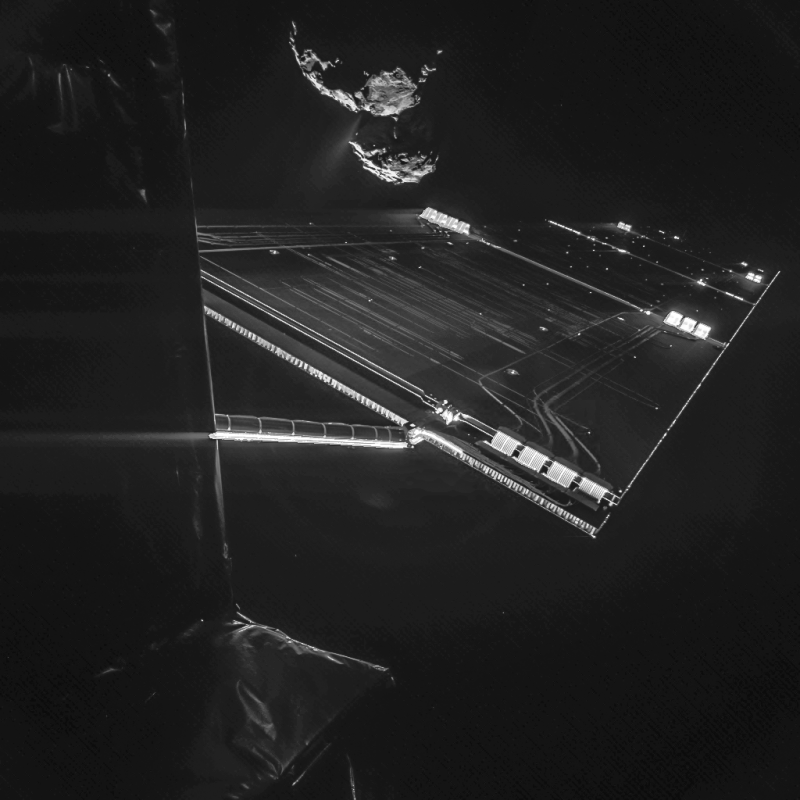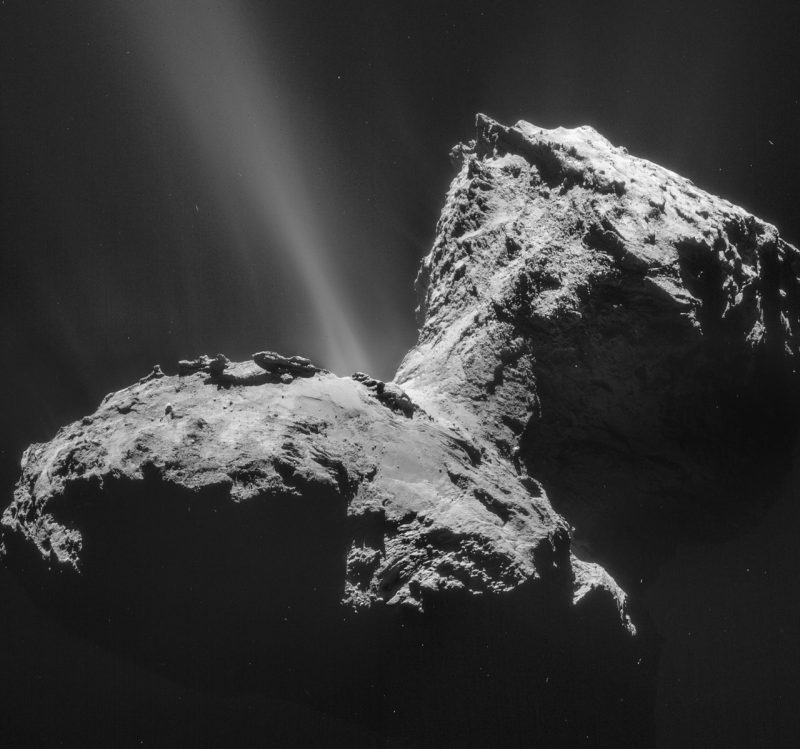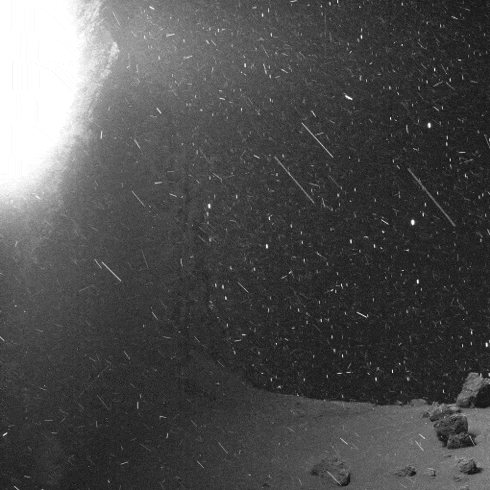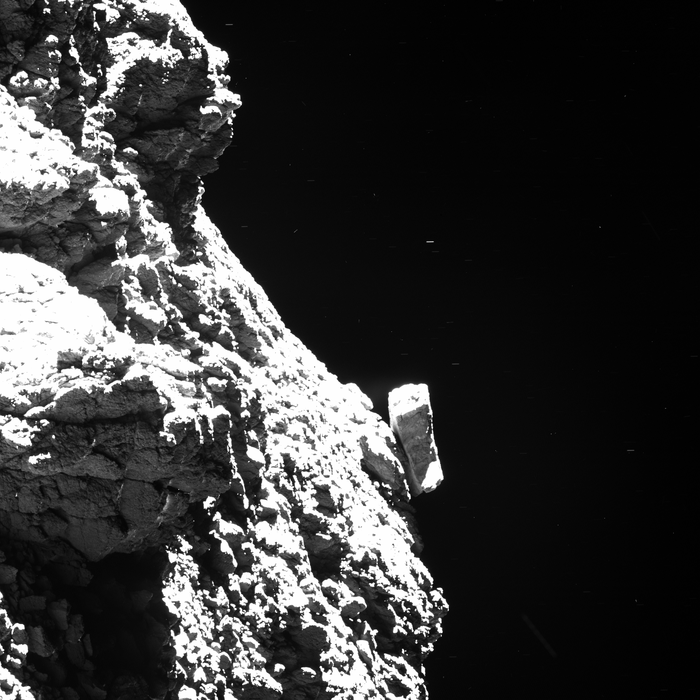
The European Space Agency (ESA) said on June 21, 2018, that the Rosetta spacecraft’s image archive is complete. Rosetta is the craft that blew our minds in 2014 by providing the first truly close-up views of a comet. And, behold, when seen close-up, comets really do look a bit like rubble piles, as astronomers have long suspected. But they also look like little worlds, complete with fractures, cliffs and massive rolling boulders. Now all high-resolution images and underpinning data from Rosetta’s pioneering mission at comet 67P/Churyumov-Gerasimenko are available in ESA’s archives, with the last release including the iconic images of finding lander Philae, and Rosetta’s final descent to the comet’s surface.
ESA said the images are available in both the Archive Image Browser and the Planetary Science Archive.


People – and not just scientists associated with the mission – are, of course, still talking about Rosetta and its images. For example, earlier this year, Twitter user @landru79 took advantage of the fact that many of Rosetta’s photos were taken in sequence — so stacked and stitched the pictures into the stunning new timelapse movie below. The movie shows what it’s like to fly past a comet moving through the space of our solar system. Read more about this movie.

Meanwhile, the Rosetta mission camera team is particularly excited about the final batch of high-resolution images from Rosetta’s OSIRIS camera, covering the period from late July 2016 to the mission’s end on September 30, 2016. The mission ended, by the way, with Rosetta’s slow descent and ultimate crash landing on the comet’s surface.
During the final two months of the mission, the spacecraft’s trajectory around the comet changed progressively, bringing the craft closer and closer to the comet. In the mission’s last hours, as Rosetta moved ever-closer, it scanned across an ancient pit and finally sent back images showing what would become its resting place. Even after the spacecraft was silent, the team were able to reconstruct a last image from the final telemetry packets sent back when Rosetta was within about 65 feet (20 meters) from the comet’s surface.
The video below shows you some of Rosetta’s final images.
ESA also spoke of its robotic Philae lander, which had traveled with the Rosetta spacecraft for over a decades until it separated to land on the comet on November 12, 2014. But – instead of anchoring itself to the comet’s surface – the lander bounced at least twice across the surface. It did achieve the first-ever “soft” (nondestructive) landing on a comet nucleus, albeit in a non-optimal location and orientation. And in fact, although ESA controllers communicated sporadically with the lander, and although the little craft’s location was identified to within a few tens of meters, Philae itself was not seen throughout most of Rosetta’s two-year orbit around the comet. It was finally identified unambiguously, lying on its side in a deep crack in the shadow of a cliff, in photographs taken by Rosetta on September 2, 2016. The image below has Philae in it … can you see it? If not, click here. ESA described the ultimately successful search for the lander this way:
One particularly memorable sets of images captured in this period were those of Rosetta’s lander Philae following the painstaking effort over the previous years to determine its location. With Rosetta flying so close, challenging conditions associated with the dust and gas escaping from the comet, along with the topography of the local terrain, caused problems with getting the best line-of-sight view of Philae’s expected location, but the winning shot was finally captured just weeks before the mission end.

Holger Sierks, principal investigator of the camera, said:
Having all the images finally archived to be shared with the world is a wonderful feeling. We are also pleased to announce that all OSIRIS images are now available under a Creative Commons license.
Matt Taylor, ESA’s Rosetta project scientist, said:
The final set of images supplements the rich treasure chest of data that the scientific community are already delving into in order to really understand this comet from all perspectives – not just from images but also from the gas, dust and plasma angle – and to explore the role of comets in general in our ideas of solar system formation. There are certainly plenty of mysteries, and plenty still to discover.
If you have time, check out the 7-minute video below, which is Rosetta’s camera team talking about the final images and about their thoughts, now that the image archive is complete:
Bottom line: In 2014, ESA’s Rosetta spacecraft showed us what comets really look like, up close. Now the craft’s archive is complete and includes images of the lost Philae lander and Rosetta’s end-of-mission descent in 2016.
Help EarthSky keep going! Please donate what you can to our annual crowd-funding campaign.











